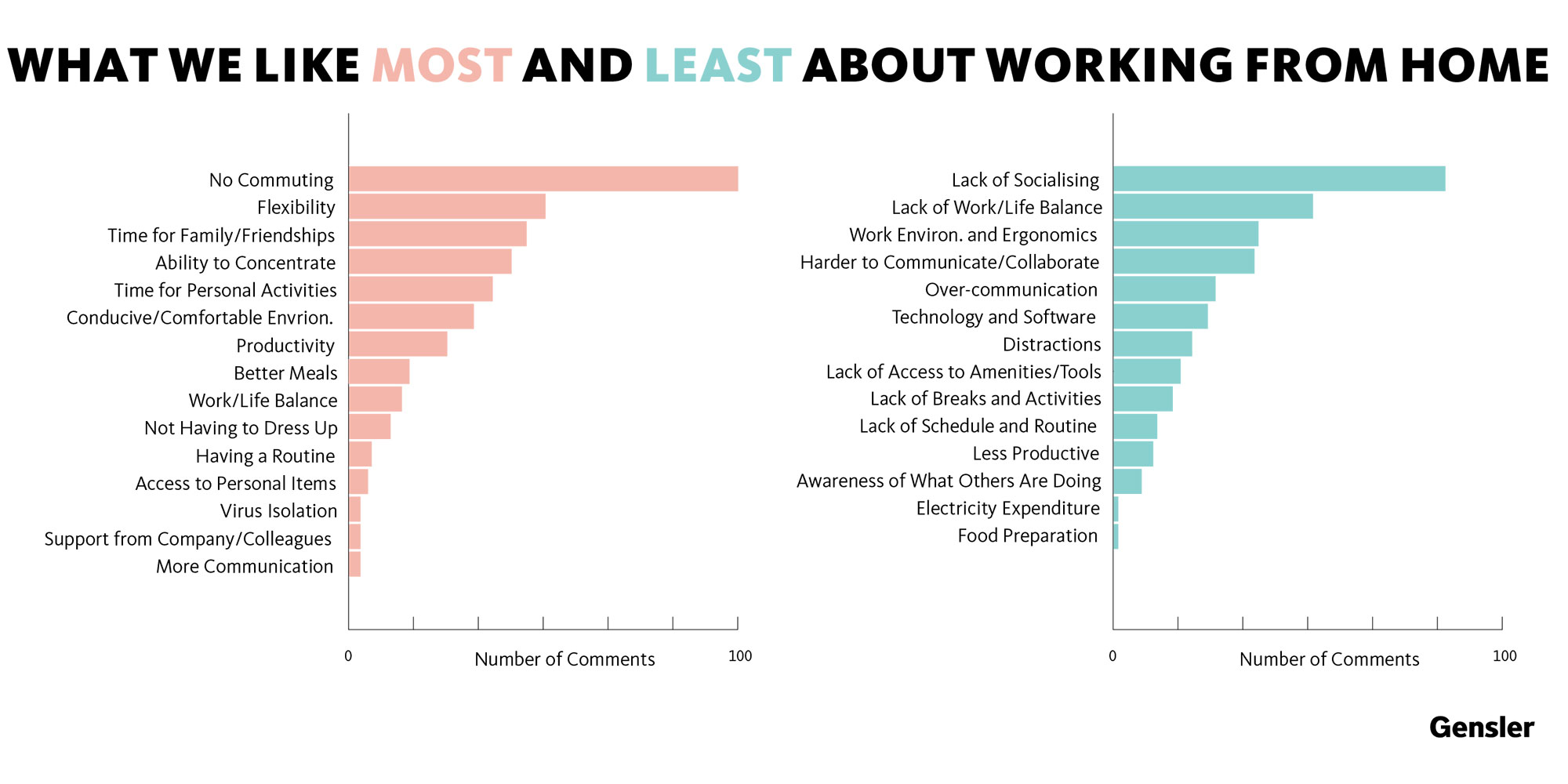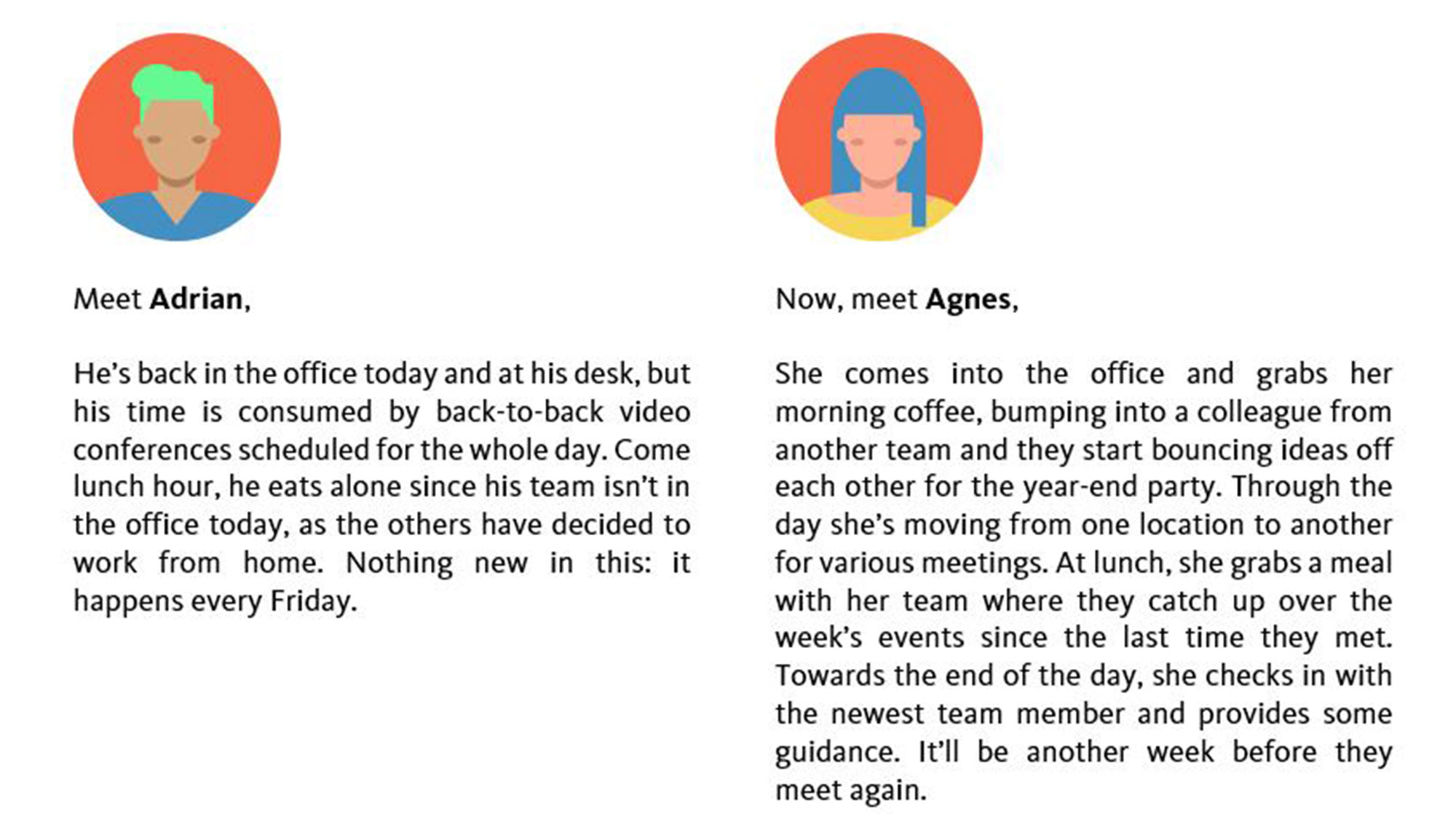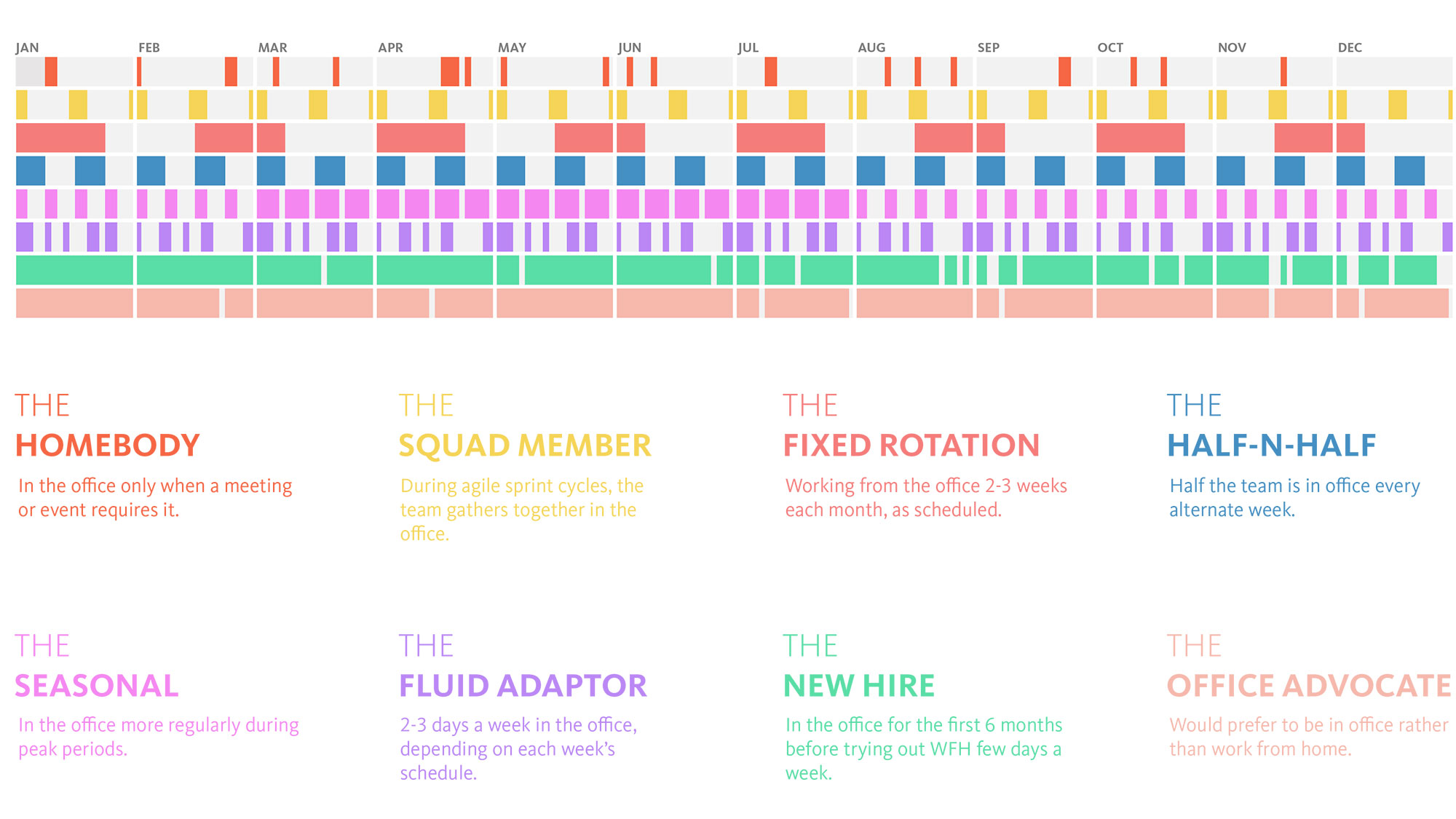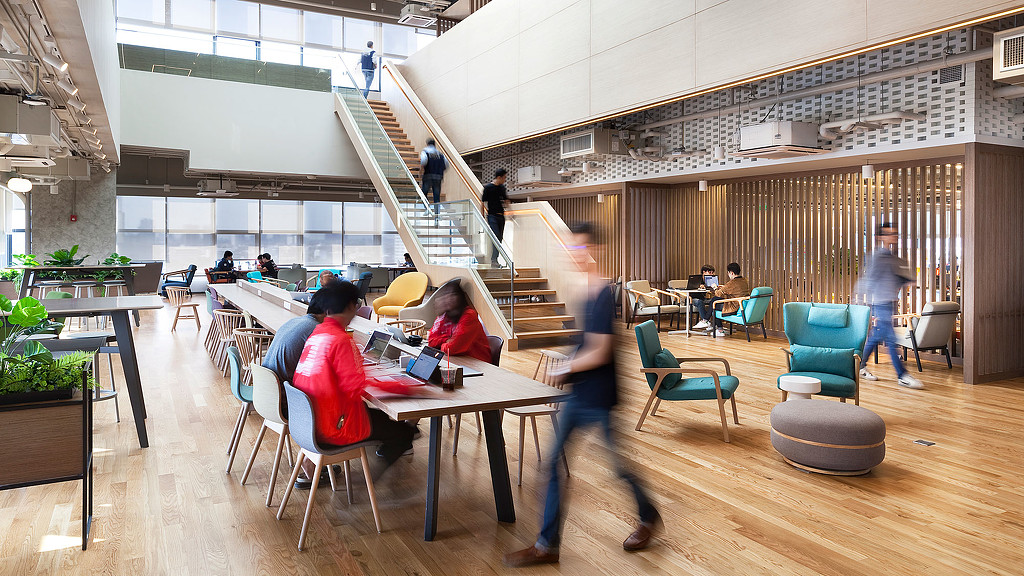Why Curated Workflow Is Essential to the New Hybrid Workplace
November 04, 2020 | By Nayan Parekh, Priscilla Teh
The widespread shift to working from home has ushered in a new era of worker choice and autonomy. As a result, many organizations are adopting a hybrid workplace model that offers the flexibility of remote work, paired with the ability to forge culture, collaboration, and connections within the office. In a hybrid scenario, some employees will split their work between the office and their homes or other locations. Employees may come into the office a few days a month, a few days a week, a few weeks per month, or even randomly.
So the big question, as companies transition dozens, hundreds, or even thousands of employees back into the new hybrid workplace is: how do we get the right mix of people in the office at the right time?
While nothing can recreate the energy in a room, working from home has been lauded for a number of reasons. From what we’ve gleaned from our Work From Home Surveys and industry discussions in the Asia-Pacific region, respondents say that not having to commute has been what they have enjoyed most about working from home. The time saved from our daily commutes has been a big plus, translating to more quality time spent with friends and loved ones. What’s more, employees enjoy the flexibility of arranging their workday.

With flexible work arrangements increasingly becoming a benefit offered by employers, organizations that adopt a hybrid working model for the long-term are likely to attract far more talent. Also, the reduced focus on geographies would allow employees to live further from city centers, since they don’t have to commute as frequently.
Yes, there are initial inconveniences of settling into hybrid modes of working, so we need a balanced approach to hybrid work arrangements. After all, once employees have had the privilege of flexibility, it can’t be taken away as easily. Just within Gensler’s Asia Pacific and Middle East region, only a small percentage of employees have indicated a preference for going back to the office full-time.

While Facebook, Twitter, and a number of tech firms have suggested that employees can work from home permanently if they wish, what we’re hearing from our clients is that the longer we stay in this full time WFH mode, the more concern there is that we’re running on previously built up social capital. Next year, we may be looking back over our shoulders only to realize that we lost our culture-connection because our organizations all transitioned to WFH.
As part of replanning for a hybrid future, workplaces will be dialing up for curated collaboration. Whether through focused work or social activities, the goal is to create value for synergistic groups of people to be in the office together, at the right time. Health and wellness, indoor-outdoor micro hubs or meeting points, scrum area design, touchdown areas for designated homeworkers, and segregable neighborhoods of 50-100 people for future pandemic readiness are all becoming part of the future workplace planning conversation. Food and beverage spaces are being reconsidered as serviced touchpoints in the office, along with hoteling spaces for client collaboration.
But if we need to truly make a hybrid future work, we need to rethink the office use case and plan workflow. Looking beyond the pandemic, a few key purposes of the workplace includes social engagement, collaboration, culture building, and opportunities for learning and mentorship. Is it really possible to have all this without in-person synergies between the groups of people concerned?

Workflow management draws into it the ebb and flow of each project team’s schedule. It’s about using algorithms to find how the right balance of people’s schedules overlaps amid a whole slew of variables.
We could compare this to train schedules, where a team is represented by a train, a station is a space in the office, and interchanges indicate where different teams interact in a shared space. Workflow management examines where exchanges occur, whether planned or casual.
Another way to look at workflow management is to compare it with how universities manage their curriculum planning, where each faculty member has different courses and students come in with varying schedules while sharing the same resources and amenities, such as lecture halls, classrooms, labs, studios, etc. Cross-disciplinary interaction and senior-junior mentorship thrive when student groups are brought together to actively learn from each other, and this thinking can be extended to the workplace.
One-size-fits-all doesn’t work for hybrid working. The extent of autonomy and level of flexibility may vary for each company. For some companies, who comes in when will be a leadership decision; for others, employees will have full autonomy in deciding their in-and-out of the office days. Still others may take an approach in-between these two models — having each business unit manage set quotas. Whatever model they follow inadvertently impacts their approach to communicating occupancy levels, managing spare capacity, and reallocating seats for no-show cases and charge-back models. More importantly, it will also impact the ability to curate cross functional overlaps that keep the water cooler moments alive.

We need to consider which departments and roles have complementary functions/more value in knowledge exchange. From a design point of view, we’re used to adjacency planning with the X-Y-Z axis in mind, across plan and section. Now, hybrid working has introduced a fourth axis: time.
For example, a new hire might need to be in the office for the majority of their time for the first six months for onboarding before they transition to WFH for a few days a week, whereas a seasonal employee might come into the office mostly during peak periods. Similarly, some teams will gather in the office for agile sprint cycles, while others will split their time with half of the team in the office every alternate week.

It could be that an over-engineering of “who comes in when” could backfire where it treads into creating division in worker “types” and taking away the serendipity that we’re trying to create through in-person connections in the office in the first place.
However, it is key to recognize that effective social engagement, collaboration, culture building, learning, and mentorship needs a level of orchestration, alongside efficient space utilization. There must be a right balance between how companies can spur curated collaboration and use space efficiently, and each organization needs to determine where this balance lies for them.
For media inquiries, email .


